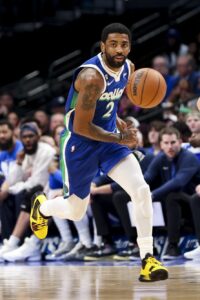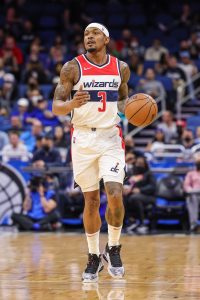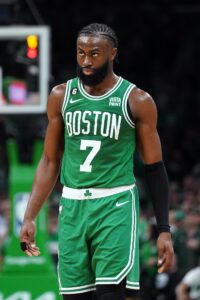Hoops Rumors is in the process of taking a closer look at each NBA team’s current roster situation, evaluating which clubs still have some moves to make and which ones seem most prepared for training camp to begin.
This series is meant to provide a snapshot of each team’s roster right now, so these articles won’t be updated in the coming weeks as more signings, trades, and cuts are made. You can follow our roster counts page to keep tabs on teams’ open spots as opening night nears.
We’re continuing our pre-camp Roster Snapshot series today with the Pacific Division. Let’s dive in…
Golden State Warriors
- Players on guaranteed standard contracts: 13
- Players on two-way contracts: 1
- Players who have reportedly reached contract agreements: 5
- Usman Garuba (two-way), Javan Johnson (training camp), Jayce Johnson (training camp), Jerome Robinson (training camp), Donovan Williams (training camp)
The Warriors will likely open the season with 14 players on standard contracts rather than 15 in order to maintain roster flexibility and avoid a higher tax bill. That 14th man may end up being a veteran free agent — Golden State has been working out a number of them and is meeting this week with Dwight Howard.
Until Golden State signs a 14th non-two-way player, the team won’t be able to begin signing its training camp invitees to Exhibit 9 contracts. That’s likely the reason why so many of the Dubs’ reported camp deals haven’t yet been finalized. Once they’re officially under contract, those players could be in the mix for the team’s final two-way slot.
Los Angeles Clippers
- Players on guaranteed standard contracts: 15
- Players on non-guaranteed standard contracts: 1
- Players on two-way contracts: 2
- Players who have reportedly reached contract agreements: 1
- Xavier Castaneda (training camp)
The Clippers’ roster could still undergo a partial overhaul if talks for Sixers guard James Harden are rekindled and result in a trade agreement, but nothing seems imminent – or even close – at this point.
If they don’t make a move for Harden, the Clippers’ biggest roster decision this fall might be whether or not to keep Preston around — his salary would become fully guaranteed if he remains under contract through October 1, so L.A. will probably have to make that call before the preseason begins.
If Preston is cut and no trades are made, the Clippers can focus on filling out their 21-man roster with camp invitees and figuring out who will fill the third two-way slot.
Los Angeles Lakers
- Players on guaranteed standard contracts: 14
- Players on Exhibit 10 contracts: 3
- Players on two-way contracts: 3
Like the Warriors, the Lakers appear likely to enter the season with an open spot on their 15-man roster for the sake of flexibility. If that’s the plan, they’re pretty much good to go, with 14 players on standard contracts and all three two-way spots filled.
Phoenix Suns
- Players on guaranteed standard contracts: 13
- Players on non-guaranteed standard contracts: 2
- Jordan Goodwin ($964K partial guarantee), Ish Wainright
- Players on two-way contracts: 2
The fact that the Suns are only carrying 13 players on fully guaranteed salaries means they’re in position to make changes if need be. But Goodwin’s almost certainly not going anywhere — following the trade of Cameron Payne, he’s in line for a significant role at point guard.
Penciling Goodwin onto the opening night roster gives Phoenix 14 players and means the only real decision is whether or not to hang onto Wainright, whose salary is entirely non-guaranteed. Team owner Mat Ishbia has shown no desire to pinch pennies since assuming control earlier this year, so I’d expect Wainright to be on the roster to start the season.
The Suns also have a two-way opening, but they’re the only team without a G League affiliate, so they’re not as incentivized to fill that spot as other clubs would be.
Sacramento Kings
- Players on guaranteed standard contracts: 14
- Players on two-way contracts: 3
It looked like centers Nerlens Noel and Neemias Queta might be battling for the 15th and final spot on Sacramento’s standard roster. However, after the Kings signed McGee, they waived both Noel and Queta in order to give them an opportunity to catch on with new teams for training camp (Queta has since agreed to sign with Boston).
Unlike many of their division rivals, the Kings aren’t in the tax and could comfortably afford to fill that 15th spot with a minimum-salary player if they want to. I expect that to happen eventually, but it’s unclear whether or not they’ll do it for the start of the regular season.
If there’s no rush to add a 15th man, the Kings’ preseason roster business would consist primarily of bringing in camp invitees and lining up G League bonuses.
 Currently,
Currently,  Suns star
Suns star  A
A